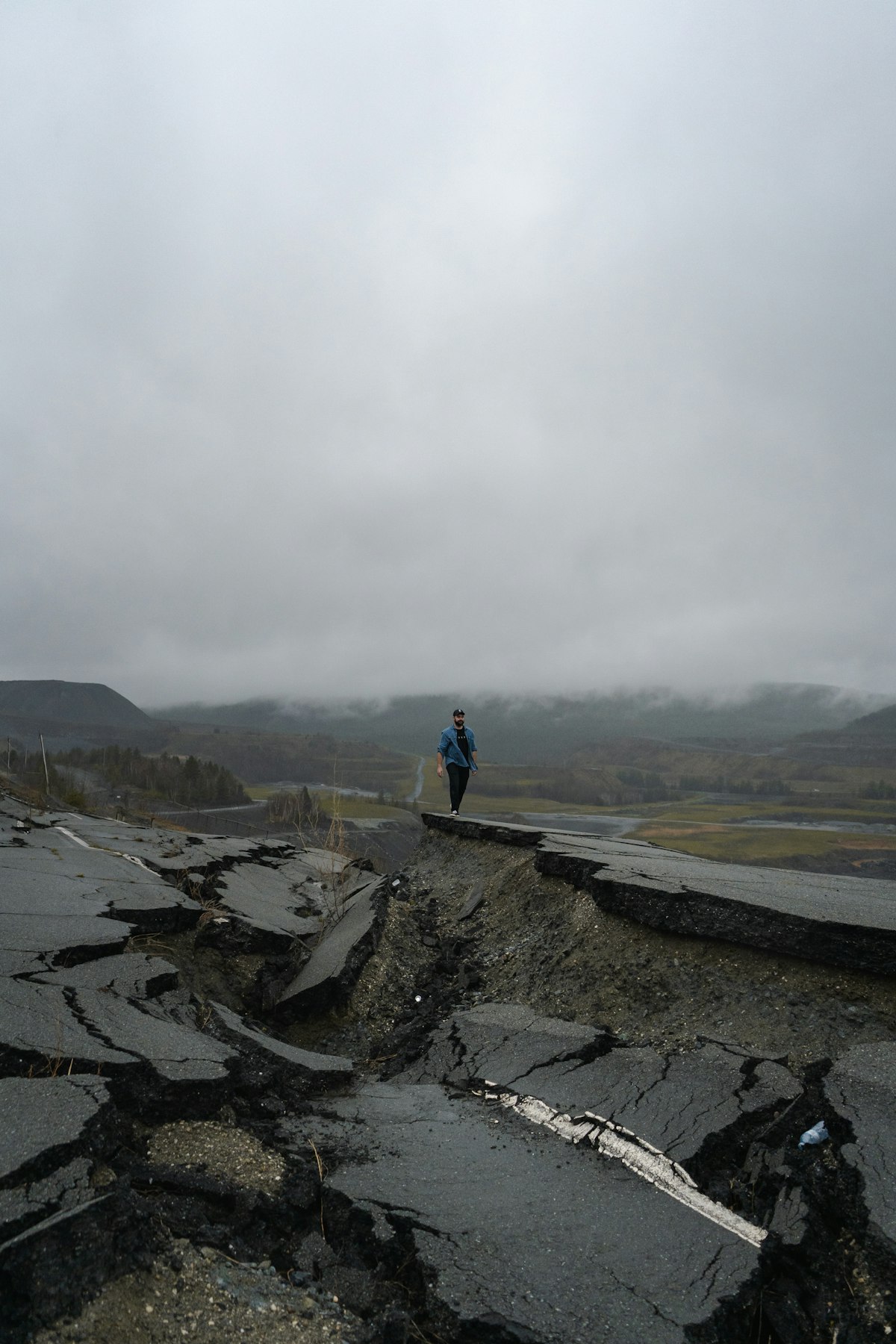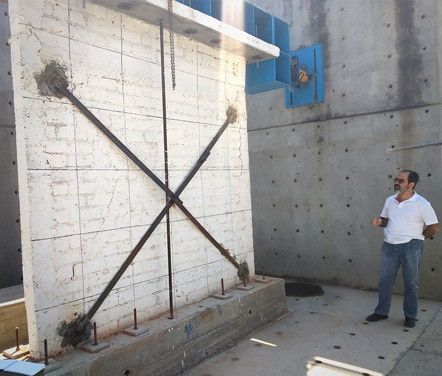Earthquakes: high buildings as an alternative for seismic areas
Read why buildings with 10 to 20 levels are more appropriate and safe for regions like Colima, which, although highly seismic, have fairly hard soil.

Ventura Ramírez, a science teacher in the area of seismic engineering, says in an interview that the entire state of Colima is in a zone of very high seismic danger because the oceanic plates of Cocos and Rivera are sinking under the North American continental plate along the Mesoamerican trench and forming subduction zones where many earthquakes occur.
Despite the above, against the popular belief that because it is a highly seismic zone, the city of Colima is not suitable for the construction of tall buildings, Dr. Agustín Orduña Bustamante is preparing the Sustainable Vertical Housing Development project, for which he proposes the application of the mechanism known as seismic isolation.
A research professor at the Civil Engineering School of the University of Colima, Agustín Orduña explains that the idea is to promote buildings for housing with ten to 20 levels, since this type of building "is more appropriate and safe for regions like Colima that, although they are highly seismic, have quite hard soil, made up of volcanic material.
According to the academic, the characteristic of earthquakes in this entity - of rapid movements and short natural periods - affects more the rigid buildings of one or two floors than the high buildings.
"In hard soils, a fast-moving earthquake, with periods of around 0.1 seconds, cannot move a large building, since it has a slower, more gradual movement, which goes from one to two seconds; the idea I propose is related to what in engineering is called seismic isolation, in which while the ground moves very fast, the building practically remains immobile; with this mechanism, the earthquake is probably perceived as going up and down, rather than the horizontal movement that can normally cause more damage", he refers.
Agustín Orduña Bustamante compares this to the maneuver made by magicians who quickly remove the tablecloth from a table on which there was a jug of water and it stays in place. "It is so fast that the movement cannot be transmitted to the jug, which is somewhat heavy. It is something similar to the movement of an earthquake: the ground and the base of the building move relatively quickly, with short, rapid oscillations, and the building has another way of vibrating more slowly, let us say that it does not have time to follow the movement of the ground".
José Francisco Ventura points out, in turn, that given the three types of soil in the Colima-Villa de Álvarez conurbation area, each zone must have its design for construction from the seismic point of view. And although the area of greatest risk is located south of the city, in all cases soil studies are required because volcanic avalanches are made up of diverse materials: "Sometimes you find very large stones and in others, there are islands of earth material known as silt or sand".
-Is this information considered in the building regulations?
-Yes and no. -Yes, because there are already studies and somehow the real estate companies know about this situation, but no, because it has not been officially published and so until this happens there is no way to make it compulsory to apply it.
"The advantage towards the southeast considered the riskiest because of its type of soil, is that originally the construction of houses is real estate - except for some traditional neighborhoods that were plots and the owners themselves were building - and these builders do comply with the regulations because the Infonavit or any other authority puts a series of filters that have to comply to insure them".
However, he warns that the extensions to these same houses are not safe, because once you add bedrooms or other spaces such as a garage, there is no guarantee that they have been made with a project that considers the seismic effect of the soil there.
Buildings for seismic areas
Although the research is based in the city of Colima, Agustín Orduña Bustamante clarifies that it is not focused exclusively on this place, since it can also be applied in other cities in the country with a similar situation in terms of seismicity and soil type. Since it is a medium-sized city, the need, from an economic point of view, to construct large buildings in the next few years in Colima is not yet perceived, and that distrust of living in a high building prevails among the population.
"One of the proposals contained in the project is to carry out a kind of campaign to raise people's awareness, to explain that tall buildings can be safer than one or two-story houses because when you have that kind of fear it is because of misinformation".
As part of the project, the base of the building would function as a buffer zone for earthquakes. The difference," says the researcher, "is in the first level of the building, whose columns would not be continuous with the beams of the upper level and, thus, in one movement what would move more is the base, and the upper part much less; technically this is insulation.
Among the technical characteristics, the first level "would be reinforced with fairly robust concrete or steel columns, but these columns must be calculated very well since they are the base and if they fail, everything falls, while from the first level upwards it would be a traditional construction, with the advantage that the columns and beams would be more reinforced: in this case, we isolate the structure from the earthquake and at the top, they would practically not feel the movement".
There are insulation systems that have been used in other countries, but in Mexico, they are just beginning to use base insulators and shock absorbers.
"Although it is another concept, the word damping helps us define the response of how much a building moves with the earthquake. If we see the earthquake as the energy that enters the building, energy in movement, damping serves to dissipate the energy and so that the construction itself does not have to dissipate it by itself, but rather some elements help it and the structure does not have to be seen to be very strained or in great demand".
In traditional insulation, he says, there is a foundation that is in contact with the ground and the insulators are relatively short elements, less than a meter high, and another foundation is placed on top of them, so there are two foundations there, at double the cost.
Instead, he says, in his project, he proposes a different type of isolation, in which there is indeed a foundation in contact with the ground, but the columns that will be able to sway and turn during an earthquake are in the structure that covers the first level, but that space can be occupied and have a function, for example, like a parking lot.
"This structure would have to be quite reinforced to support this movement of the columns, and from there, the construction can be done traditionally," he says.
Among the advantages of this system is that there would be practically no damage from an earthquake, because when the ground moves, the columns turn, but since the cracks between the columns, the foundation, and the area above are already formed in some way, there will be no cracking: "The column will simply turn and return to its vertical position and there was no damage, there is nothing to repair; from the economic point of view, it is an advantage".
Why earthquakes occur
According to the National Center for Disaster Prevention, an earthquake is the "vibration of the earth caused by the propagation in the interior or on the surface of it, of various types of waves." The intensity of these waves is variable and, as we know, some earthquakes are practically imperceptible, and others that cause great damage especially if they are close to areas inhabited by humans.

To understand why earthquakes occur, we must remember a little of our geography classes. The upper layer of the earth, below our feet, has an approximate thickness of one hundred kilometers, this layer is rocky and is fragmented into different plates, which are the tectonic plates.
The tectonic plates are not fixed, but in constant movement and can move without there being "friction" between them but when their mobility causes their edges to make contact, friction efforts are produced that prevent the displacement of one relative to the other. If this friction force between plates is greater than the strength of the rocks, a rupture or overlap of the plates can occur, which translates to those on the surface as an earthquake.
These movements of tectonic plates are occurring all the time, 24 hours a day, 365 days a year so it can not be predicted when the movement will be more or less intense because it is not a movement that keeps patterns but is completely random.
The answer is in the same tectonic plates. The more tectonic plate edges there are below an area, the greater the likelihood of an earthquake. Some countries are on one of these plates and the edges of it are very far away, but there are others, such as Mexico, Colombia, Chile, Indonesia, or Japan, which are on the edges of some tectonic plates which increases their chances of there is an earthquake
Mexico is on the plate of North America but its Pacific coast, there is the plate of Cocos, the one of the Pacific and in its border with Central America, there is the plate of the Caribbean. In the case of Colombia, for example, it is on the plate of South America but its Pacific coast is adjacent to the Nazca plate.
Do not forget that the Earth is in constant motion and that there is no way to predict a telluric movement. What we can do is prevent and be prepared for when it may occur.
By Pedro Zamora Briseño
An extract from an interview with the Agencia Informativa Conacyt




